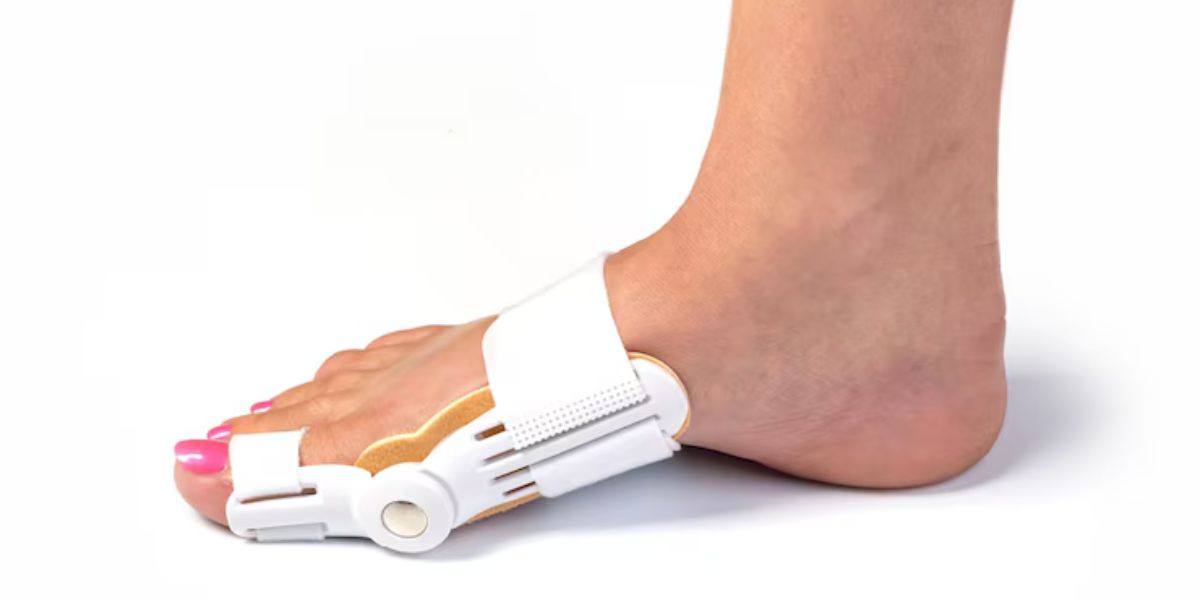Dealing with plantar fasciitis can be frustrating, especially when the pain hits hardest in the morning. Many people struggle with plantar fasciitis nighttime pain, making it difficult to sleep or feel rested. One of the most effective ways to manage this condition is by using plantar fasciitis night splints. These specially designed braces keep your foot stretched overnight to help reduce inflammation and pain. By gently supporting the arch and heel, foot support for plantar fasciitis encourages healing and provides noticeable relief. If you’re tired of waking up with morning foot stiffness, wearing a foot brace while sleeping may offer the comfort and improvement you’ve been searching for.
What Is Plantar Fasciitis and Why Does It Hurt More After Rest?
Plantar fasciitis is one of the most common causes of heel pain in adults. It happens when the plantar fascia, a thick band of tissue that runs across the bottom of your foot, gets irritated. The pain usually comes from tiny tears or plantar fascia inflammation. Most people feel plantar fasciitis discomfort in the morning, especially when they take their first steps.
Heel pain at night or after sitting for long periods is also common. That happens because the tissue tightens when your foot rests. When you stand up again, that sudden stretch causes a sharp pain. This cycle makes morning foot stiffness relief an important part of any plantar fasciitis treatment plan.
What Are Night Splints and How Do They Work for Plantar Fasciitis?
Orthopedic night splints are devices that hold your foot in a flexed position overnight. They keep your toes pointed up and your foot dorsiflexed. This position gently stretches your plantar fascia and Achilles tendon while you sleep. Over time, that helps reduce tightness and promotes healing.
Many doctors recommend using a foot dorsiflexion brace as part of long-term plantar fasciitis care. These splints stop your fascia from tightening overnight, making mornings less painful. This approach is especially helpful for foot pain during sleep and early morning flares.
How Night Splints Relieve Plantar Fasciitis Pain
People often ask, “how do night splints relieve heel pain?” The main answer is they reduce the microtears caused by daily walking. They also reduce overnight contraction of the plantar fascia. That means less pulling and less pain when you stand up.
Clinical studies have shown that consistent use of a foot brace while sleeping can lead to noticeable improvement in just a few weeks. Some users say they notice plantar fasciitis pain relief within 10 days. Night splints also improve plantar fascia stretching, helping the tissue become more flexible over time.

Usage and Benefits of Night Splints for Heel Pain
One of the best reasons to use night splints for heel spurs or plantar fasciitis is that they’re non-invasive. Unlike surgery or injections, splints work passively while you rest. This makes them a low-risk option for most people.
Another benefit is that plantar fasciitis nighttime pain and morning foot stiffness often improve without medication. Some splints also provide ankle support for plantar fasciitis, which keeps your foot stable. Overall, they are part of a strong plan for chronic foot pain relief and daily comfort.
How Long Does It Take for Night Splints to Work?
If you’re wondering, “how long to wear night splints for plantar fasciitis?”, the answer varies. On average, people need to wear them for 6 to 8 weeks before seeing major improvement. Some feel better sooner; others need more time.
Wearing the splint every night is key. Skipping days can delay progress. Many podiatrists say plantar fasciitis night splint effectiveness depends on how often and how long you use it. If you’re patient, results usually follow.
Best Night Splints for Plantar Fasciitis in 2025
Finding the best night splints for plantar fasciitis means looking for comfort and durability. Soft splints are good for light stretching, while rigid ones give stronger support. Some popular brands in 2025 include:
| Brand Name | Type | Features |
| Strassburg Sock | Soft Splint | Easy to wear, adjustable angle |
| Cramer Dorsal | Hard Splint | Lightweight, breathable design |
| Vive Night Brace | Hybrid | Adjustable tension, cushioned |
Choose one that fits your foot and comfort needs. A good fit improves your chance of seeing heel pain therapy results.
DIY Night Splints: Can You Make One at Home?
If you’re on a budget, a DIY night splint for plantar fasciitis might help. Some people use a thick sock with a strap tied to their shin to hold the foot upward. Others tape their foot to maintain a flexed position.
While homemade options may offer short-term relief, they lack the support and precision of real splints. For long-term results, investing in a proper foot support for plantar fasciitis is a smarter move.
Can Night Splints Worsen Plantar Fasciitis?
Some people ask, “can night splints make heel pain worse?” The answer is rare, but possible. If your splint is too tight or used incorrectly, it can put pressure on nerves or joints. That might cause discomfort or even swelling.
If your pain gets worse after starting night splint therapy, stop and talk to your doctor. They may adjust the fit or recommend another type. In general, is it safe to wear a plantar fasciitis splint all night? Yes—just make sure it’s comfortable and fits well.
Night Splint Therapy Near Me in Chandler, Arizona
If you’re searching for night splint therapy in Chandler Arizona, many local podiatrists and foot clinics can help. These professionals offer fittings, guidance, and custom solutions.
Some clinics also combine plantar fasciitis therapy Chandler AZ with physical therapy or orthotics. Combining these treatments often gives better outcomes than using night splints alone.
Combining Night Splints with Other Plantar Fasciitis Treatments
While night splints are effective, they work best when used with other treatments. Combining plantar fascia stretching, ice packs, orthotics, and proper footwear can speed recovery. Some patients even try shockwave therapy or acupuncture.
Doctors often recommend this multi-approach method for home treatment for plantar fasciitis heel pain. It allows for faster results and lower risk of future flare-ups.
When to See a Podiatrist for Heel Pain
If you’ve tried splints and still feel pain after several weeks, it may be time to seek professional care. A podiatrist can evaluate your condition, rule out other problems, and create a custom plan.
You should also ask about night splints vs orthotics if you’re unsure which one is right. Some people benefit more from daytime support or plantar fasciitis support while sleeping combinations.
Final Thoughts on Treating Plantar Fasciitis with Night Splints
So, do night splints help plantar fasciitis? Yes, they do for many people. They offer a safe, non-surgical way to manage plantar fasciitis pain after sleeping and reduce daily discomfort. But they work best when used consistently.
Remember to give your body time to heal, wear your splints correctly, and try other supportive treatments. With the right plan, you can enjoy less pain and more freedom in your daily steps.
Twisted vs Sprained vs Rolled Ankle
FAQs
Do night splints work for plantar fasciitis?
Yes, night splints can help by keeping the foot in a stretched position, reducing morning pain.
What is the best overnight treatment for plantar fasciitis?
Wearing a night splint combined with gentle foot stretches and proper support is often most effective.
What should I wear at night with plantar fasciitis?
A dorsal or boot-style night splint is recommended to keep your foot flexed and reduce morning stiffness.
What type of splint is best for plantar fasciitis?
Dorsal and boot-style splints are both effective, but the best choice depends on comfort and personal preference.
Welcome to Heel Tooth! I’m Lee Marvin.

